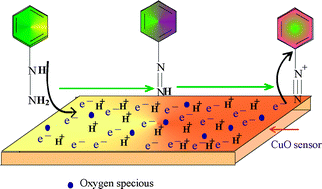Highly sensitive and stable phenyl hydrazine chemical sensors based on CuO flower shapes and hollow spheres†
Abstract
Chemical sensors are needed to develop efficient sensing systems with high flexibility, and low capital cost for controlled recognition of analytes. Herein, we report a highly sensitive, low cost, simple chemical sensor based on flower shape and hollow sphere CuO. Following the precipitation process, FESEM images revealed that CuO


 Please wait while we load your content...
Please wait while we load your content...